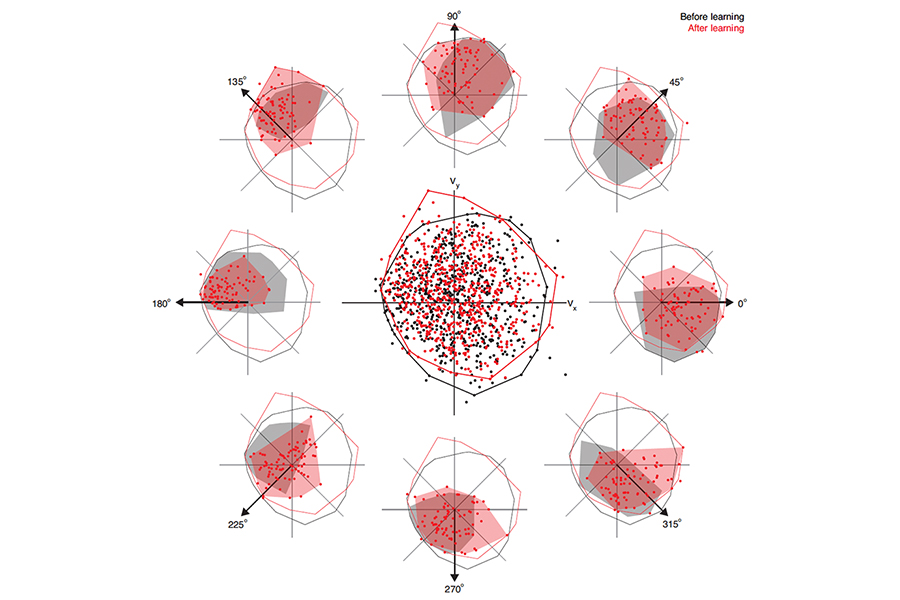
The Learning Brain is Less Flexible Than We Thought
Research recently published in Nature Neuroscience from the Carnegie Mellon University and the University of Pittsburgh examined the changes that take place in the brain when learning a new task.
The research team used a brain-computer interface (BCI), where subjects moved a cursor on a computer screen by thought alone. The team found that the brain operates under a more stringent set of constraints than originally thought, resulting in good learning on the short term, but nevertheless suboptimal performance in controlling the BCI cursor.
Read more about the team's findings
Pictured above: Visualization of population activity patterns from an example experiment. Population activity patterns recorded before learning (black; from the last 50 trials under the intuitive BCI mapping) and after learning (red; from the 50 trials of peak performance under the perturbed BCI mapping), visualized as their 2-D output through the perturbed BCI mapping. Each point represents the cursor velocity that an activity pattern contributes to cursor movement according to the perturbed mapping.